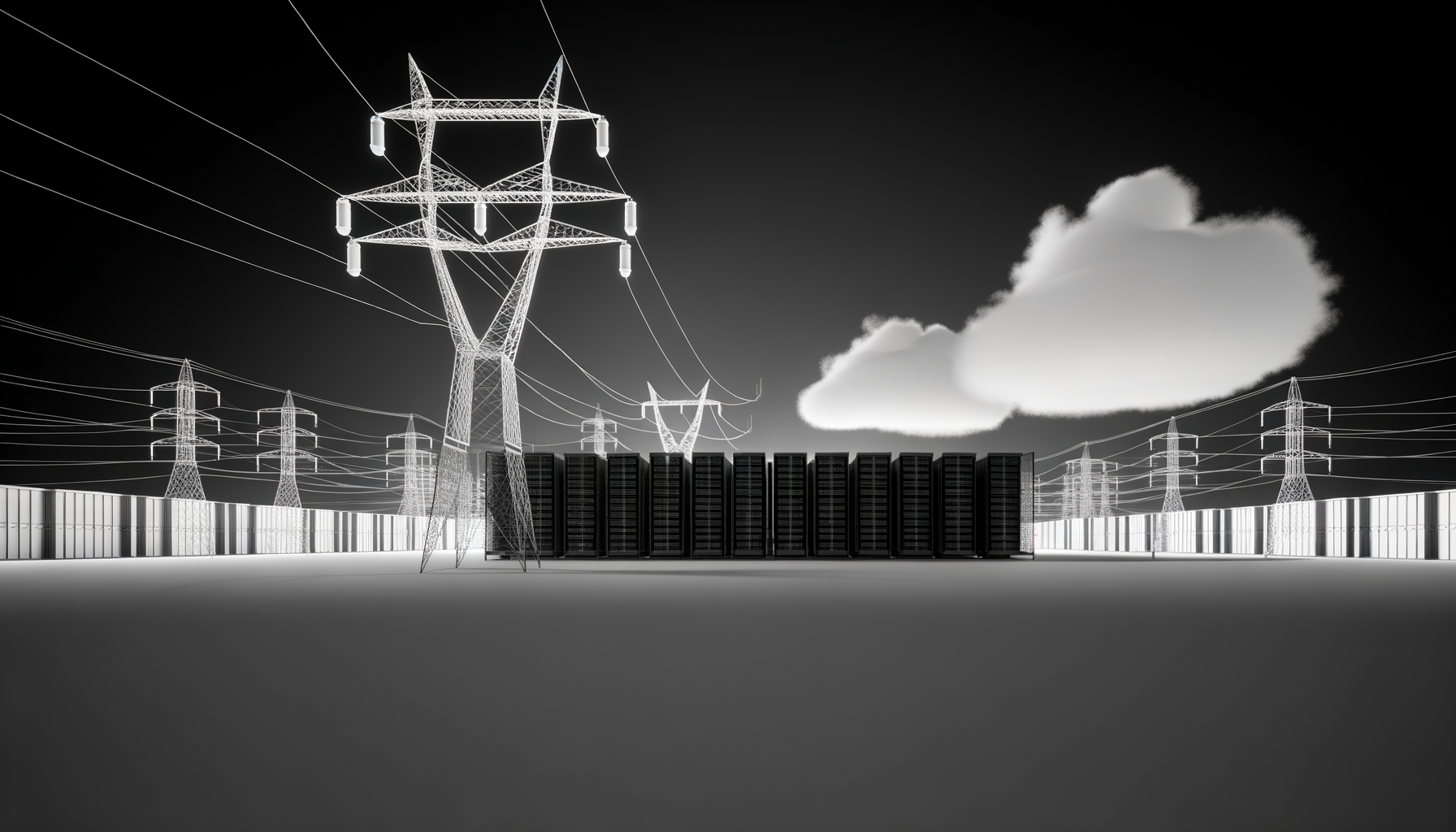Your enterprise just lost the AI race not because of bad algorithms or slow GPUs but because your local power grid can’t handle another server rack—welcome to the era where kilowatts matter more than CUDA cores.
The $65 Billion Wake-Up Call Nobody Saw Coming
When Meta announced its $65 billion AI infrastructure investment for 2025, most analysts focused on the semiconductor spending and computational capacity. They missed the real story: over 40% of that budget is earmarked for power generation and grid upgrades. This isn’t about buying more GPUs—it’s about literally building power plants.
The numbers tell a story that should terrify every CTO who thought cloud migration solved their infrastructure problems. Goldman Sachs projects a 165% growth in data center power demand by 2030, driven almost entirely by AI workloads. That’s not a linear scaling problem—it’s an exponential crisis that makes Y2K look like a minor inconvenience.
Why Traditional Data Strategies Just Became Obsolete
For two decades, enterprise data strategy followed a predictable pattern: optimize for compute efficiency, minimize latency, maximize throughput. Power consumption was an afterthought, relegated to facilities management. That paradigm just died.
Consider what’s happening right now:
- Northern Virginia’s data center corridor is hitting hard power limits—new facilities are being denied grid connections
- Singapore has imposed a moratorium on new data center construction due to power constraints
- Dublin faces rolling blackouts partly attributed to data center demand exceeding 14% of national grid capacity
- Phoenix data centers are building their own solar farms because the grid literally cannot supply enough power
“Your competitive advantage in AI isn’t your model architecture or training data anymore—it’s whether you can secure 50 megawatts of reliable power before your competitor does.”
The Power-First Architecture Revolution
The shift to power-first thinking fundamentally rewrites how enterprises must approach AI infrastructure. Equinix’s 2025 infrastructure trends report reveals that 73% of new data center deployments are now location-constrained by power availability, not network connectivity.
This creates a cascading series of strategic reversals:
1. Geographic Arbitrage Becomes Power Arbitrage
Forget optimizing for network latency or proximity to users. The new game is proximity to reliable, affordable power generation. Iceland’s geothermal-powered data centers are seeing 400% year-over-year growth in AI workload migrations. Quebec’s hydroelectric grid is attracting more AI infrastructure investment than Silicon Valley.
2. Edge Computing Gets Redefined by Grid Capacity
The traditional edge computing model assumed you’d push compute closer to data sources. But when a single AI inference cluster requires 10MW of power, “edge” becomes wherever you can secure a substation upgrade. Rural areas with excess grid capacity are becoming the new edge locations—not because they’re close to users, but because they have power to spare.
3. Hybrid Cloud Strategies Collapse Under Power Reality
The promise of seamlessly moving workloads between on-premise and cloud infrastructure assumes both locations can actually run your workloads. When your on-premise facility is power-capped and your cloud provider is rationing GPU hours due to their own power constraints, that flexibility evaporates.
The $8.75 Trillion Dependency Nobody’s Discussing
By 2027, $8.75 trillion of global economic activity will depend on data center infrastructure. That’s not just tech companies—it’s manufacturing, healthcare, finance, retail, and government services. Every one of these sectors is betting their future on AI capabilities that require massive power infrastructure that simply doesn’t exist yet.
The math is brutal:
- Training a single large language model requires approximately 10 GWh of electricity
- Running inference at scale multiplies that by 100-1000x annually
- Current global data center capacity: ~200 GW
- Projected need by 2030: ~520 GW
- Time to build a new power plant: 5-10 years
Government Response: Too Little, Too Late?
The America’s AI Action Plan, published July 10, 2025, acknowledges the crisis by mandating federal lands be made available for data center and power generation construction. But policy moves at government speed while AI infrastructure demands move at Silicon Valley speed.
The plan’s provisions include:
- Fast-track permitting for data center power infrastructure
- Federal loan guarantees for private power generation serving AI facilities
- Exemptions from certain environmental reviews for critical AI infrastructure
- Creation of “AI Infrastructure Zones” with pre-approved power allocations
But here’s what they’re not telling you: even with expedited permitting, we’re looking at a 5-7 year gap between power demand and supply. That’s 5-7 years where power access, not technological capability, determines AI winners and losers.
The New Strategic Imperatives
Smart enterprises are already adapting to this power-first reality with radical strategic shifts:
1. Power Purchase Agreements (PPAs) as Competitive Moats
Microsoft’s 20-year nuclear power purchase agreement isn’t about green credentials—it’s about guaranteeing 835MW of dedicated AI compute power. Expect to see PPAs become as strategic as patent portfolios.
2. Vertical Integration Into Energy
Amazon’s acquisition of a 960MW data center campus next to a nuclear plant in Pennsylvania signals the future: tech companies becoming energy companies. The boundary between data infrastructure and power infrastructure is dissolving.
3. AI Workload Scheduling by Time-of-Use Power Pricing
Google’s DeepMind is pioneering “power-aware” AI training that automatically shifts workloads to follow renewable energy availability. Training happens when the wind blows and the sun shines, not on fixed schedules.
4. Liquid Cooling as Mandatory, Not Optional
Air cooling’s 40% efficiency penalty is no longer acceptable when every watt counts. Enterprises still planning air-cooled AI infrastructure are planning for obsolescence.
The Uncomfortable Truth About Cloud Providers
Here’s what AWS, Azure, and Google Cloud don’t want you to know: they’re hitting the same power walls as everyone else. Those GPU shortage allocations? They’re really power shortage allocations with extra steps.
Cloud providers are quietly implementing:
- Shadow pricing based on power consumption, not just compute hours
- Geographic workload restrictions based on regional grid capacity
- Time-of-day pricing that reflects grid demand, not user demand
- Hard caps on power-intensive workloads regardless of willingness to pay
The “infinite scalability” promise of cloud computing just met the very finite reality of electrical grids.
What This Means for Your Enterprise
If you’re still thinking about AI strategy in terms of model selection and data pipelines, you’re solving yesterday’s problem. Tomorrow’s competitive advantage comes from answering these questions:
- Can you secure 50-100MW of dedicated power capacity in the next 18 months?
- Are your data centers within 50 miles of expandable power generation?
- Do you have relationships with utility companies at the executive level?
- Is your facilities team involved in every AI strategy discussion?
- Have you modeled your AI roadmap against regional grid expansion plans?
If you answered “no” to any of these, your AI strategy has a power-shaped hole in it.
The Path Forward: Embrace the Constraint
The enterprises that win in the power-constrained AI era won’t be those that ignore the limitation—they’ll be those that design around it. This means:
Algorithmic Efficiency as a Core Competency
When power is scarce, the ability to achieve 90% of the performance with 10% of the power consumption becomes a massive competitive advantage. Expect to see “performance per watt” replace “performance per dollar” as the key metric.
Geographic Distribution as Risk Management
Single-region AI infrastructure is a single point of failure when that region hits power limits. Geographic distribution isn’t about latency anymore—it’s about power availability arbitrage.
Power Infrastructure Investment as Strategic CapEx
CFOs who balk at power infrastructure investment are missing the point. In a power-constrained world, owning generation capacity is like owning spectrum in the wireless era—a license to operate.
The 2030 Scenario No One Wants to Discuss
By 2030, we’ll see a two-tier AI economy: those with power, and those without. The have-nots won’t be companies that lack AI expertise or data—they’ll be companies that lack megawatts.
This creates a series of dystopian but likely scenarios:
- AI compute rationing based on corporate power generation contributions
- Black markets for data center power allocations
- Regulatory battles over “AI power hoarding”
- National security implications of foreign ownership of power infrastructure
- Innovation stagnation as startups get priced out of AI by power costs
The hard truth: Your enterprise AI strategy is only as good as your power strategy, and if you’re just figuring this out now, you’re already three years behind.





